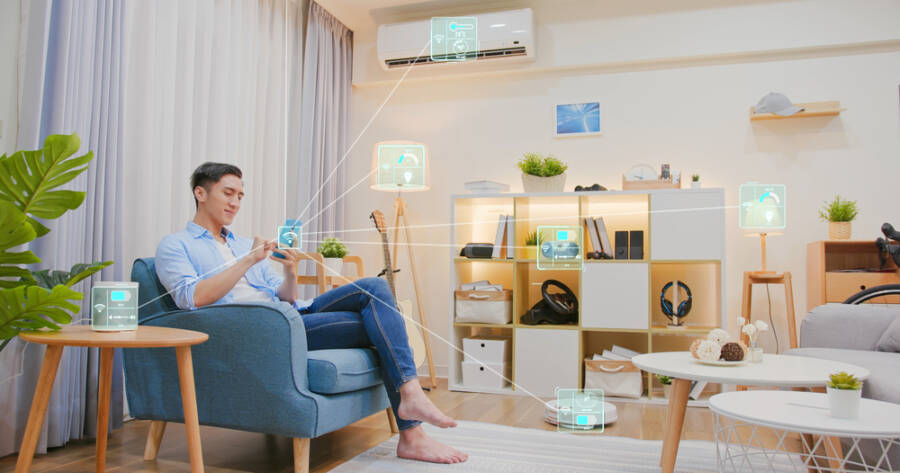Cutting down on energy bills doesn’t mean you have to sacrifice comfort. With the right upgrades, you can make your home more efficient, reduce your monthly costs, and increase overall comfort, all while lowering your environmental impact. Many of these improvements pay for themselves over time and can even boost your property’s value. Whether you’re looking to make small tweaks or big changes, energy-smart choices can lead to long-term savings and a more sustainable home.
Seal Air Leaks and Improve Insulation
One of the easiest ways to improve efficiency is to stop energy from escaping in the first place. Small air leaks around windows, doors, vents, and electrical outlets can lead to major heat loss in winter and unwanted heat gain in summer. Sealing these gaps with weatherstripping or caulk can quickly reduce your energy use.
Insulation is equally important. Upgrading attic or wall insulation helps maintain a consistent indoor temperature year-round. This reduces the demand on your heating and cooling systems, saving you money month after month. Many older homes benefit from even modest insulation improvements, especially in unconditioned spaces like basements or crawl spaces.
Switch to Energy-Efficient Windows
If your windows are drafty, outdated, or single-pane, replacing them with double- or triple-pane models can make a big difference. Energy-efficient windows come with features like low-emissivity (Low-E) coatings and gas fills between panes, which improve insulation and reduce heat transfer.
New windows help maintain indoor comfort, reduce noise, and limit UV exposure that can fade furniture and floors. While window upgrades can be an investment upfront, they often qualify for tax credits or rebates—and the energy savings add up quickly over time, especially in regions with extreme temperatures.
Upgrade to a Smart Thermostat
Heating and cooling account for a large portion of home energy use. A smart thermostat helps you manage this more efficiently by learning your preferences and adjusting temperatures based on when you’re home or away. Many models also provide real-time energy data to help you identify savings opportunities.
Some smart thermostats can even be controlled remotely via an app, making it easy to optimize settings while you’re at work or on vacation. These devices are affordable, easy to install, and often eligible for utility rebates, making them one of the best low-cost upgrades for long-term energy savings.
Replace Old Appliances with ENERGY STAR Models
Outdated appliances can be major energy drains. Refrigerators, dishwashers, washers, dryers, and even water heaters that are more than 10 years old likely use far more energy than current models. Upgrading to ENERGY STAR–certified appliances ensures you’re using the most efficient technology available.
These models are designed to use less energy and water without sacrificing performance. While the upfront cost may be higher, the lower utility bills and longer lifespans help offset that over time. When planning a kitchen or laundry room update, prioritizing efficient appliances is a smart move that pays off.
Switch to LED Lighting and Smart Bulbs
Lighting may not be the biggest source of energy use, but switching to LEDs is one of the easiest and most cost-effective upgrades you can make. LED bulbs use up to 90% less energy than incandescent ones and can last over a decade with regular use.
Consider pairing your LED bulbs with smart technology to control lighting remotely or set schedules based on your routines. This not only saves energy but also adds convenience and security. Swapping out bulbs is a quick weekend project that delivers immediate returns, especially if you replace frequently used lights first.
Install Solar Panels or Explore Renewable Energy Options
If you’re ready for a larger investment, solar panels can drastically cut your energy bills and reduce reliance on the grid. Many homeowners qualify for tax incentives, rebates, or financing options that make solar more accessible than ever. Over time, solar systems often pay for themselves and can increase property value.
Even if solar panels aren’t feasible, some utility companies offer renewable energy programs where you can opt into clean energy sources. These programs support sustainability goals and offer peace of mind knowing you’re contributing to a cleaner future, while potentially saving money in the long run.
Smart Homes, Smart Savings
Energy-efficient upgrades don’t have to happen all at once. Whether you start small with weatherstripping and LEDs or take the plunge with solar panels and new appliances, each step moves you closer to a more efficient and affordable home. These choices help you take control of your utility bills, reduce environmental impact, and create a more comfortable living space for years to come. And when your home works smarter, your savings grow stronger.

